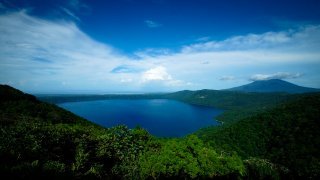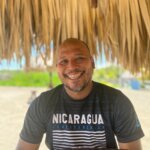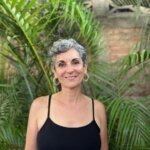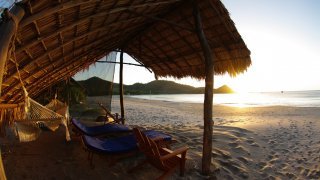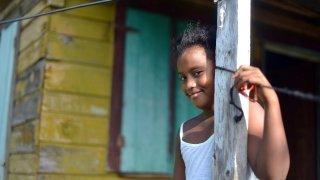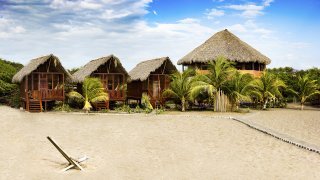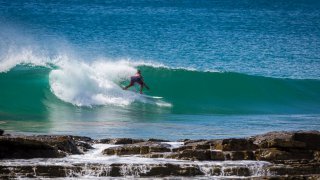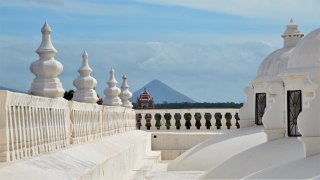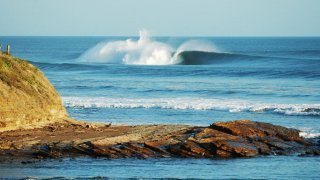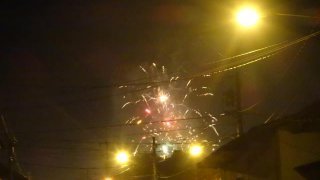Landscapes
From the colorful Pacific and Caribbean coasts straight out of a postcard to the more humid forest colors in center of the country, Nicaragua offers travelers a variety of landscapes!
The Pacific and Caribbean coasts of Nicaragua are coastal plains at sea level. In the South, on the border with Costa Rica, you’ll find swampland. Landscapes gradually increase in height towards the central range of the country. The central lands of Nicaragua are at an average altitude of 600 meters!
Here you’ll find the Maribios mountain range, a chain of volcanoes that cross the plains on the edge of the Pacific Ocean to the Xolotlan lagoon on the outskirts of Managua. The San Cristobal cordillera rises up to 1700 meters above sea level!
The highest point in Nicaragua is Mount Mogoton, at 2,450m. It is part of the second highest mountain range in the country: the Cordillera Isabelia. These mountains are located on the border between Honduras and Nicaragua, where the land is higher and cooler.
Volcanoes
In Nicaragua there are more than twenty volcanoes attributed to the country’s unique geographical location: the center of the volcanic arc of Central Americay in the Pacific Ring of Fire.
Except for two of them, all are located on a line parallel to the Pacific Ocean, on the west coast, stretching from the border with Honduras to the border with Costa Rica. To the northwest, you’ll find the Gulf of Fonseca, a natural boarder between Honduras, El Salvador and Nicaragua, dominated by the remains of the Cosigüina volcano (872m). Formerly 4,376m high, after one of its most violent eruptions in 1835, it fell to 845m. Today the crater of the volcano shelters a lagoon.
In the south, between Chinandega and León you’ll find the 60km long Maribios mountain range, perfect for exploring:
- The San Cristóbal volcano, one of the highest in Nicaragua with an altitude of 1,745m.
- The Telica volcano (1,061m), perhaps one of the most active volcanoes in Nicaragua, with constant emanations of gas and vapors. A climb to the summit is possible. You can even spend night there to see the bubbling lava.
- One of lowest volcanoes in the country, Cerro Negro. Known for it’s lunar aspect, this name was given to it for the color of its sand. It’s last eruption dates back to 1999. Climbing here is relatively easy, and its descent is unique in the world: you’ll sand surf your way down!
- The Momotombo volcano (1 297m) is closed to visitors, it has been closed because it is constantly active.
Between the cities of Masaya and Granada are other volcanoes, geographically close but with completely opposite environments :
- The Mombacho volcano (1,344m), with a microclimate that contains the last tropical rainforest in the world! One of the best coffees in Nicaragua is grown on its slopes. Its last eruption formed 350 islets in Lake Nicaragua, known as the isletas.
- The Masaya volcano (635m) is probably one of the most visited volcanoes in Nicaragua, with its lava lake nicknamed “Boca de Infierno” (The Mouth of Hell), where ancient human sacrifices were made to calm the anger of the pre-Colombian gods! From the rim of the crater, you can observe the boiling lava and smell the fumaroles that testify to the liveliness of the volcano!
- The Apoyo volcano, called “Laguna de Apoyo” because its ancient crater is now filled with water, has become a hot spot for a Sunday swim.
In the middle of Lake Nicaragua is the island of Ometepe, an island formed by two volcanoes :
- The Concepción volcano (1,700m) has a perfect semi-conical shape and is still very active. Its ascent is steep, a guide is mandatory because more traveler has gotten lost up there!
- The Maderas volcano (1,394m), with slopes covered with coffee and banana plantations, shelters a lagoon in its crater. Its waters are thermal and are famous for their youthfulness: they can be accessed alittle lower down via the Ojo de Agua basins.
Beaches
From the Pacific coast and the Caribbean coast, there are many places to swim and marvel at!
The west coast of Nicaragua is bordered by the Pacific Ocean, where black sand beaches are and waves will amaze you. The coast is famous for surfing!
Its beaches are famous for the gradation of colors offered by its sand. In the North, near León on the beaches of Poneloya or Las Peñitas, the sand is black because of the many volcanoes around. A little further south, on less frequented beaches like La Boquita or Las Salinas, the sand is lighter.
Although it is known as the most prominent place on the Pacific coast, San Juan Del Sur, nestled in a bay, has kept its soul as a fishing village. To the south and north of San Juan del Sur there are wonderful beaches for relaxing and surfing.
Among the most beautiful of Nicaragua’s beaches are Playa Hermosa, Playa Madera, Playa Majagual, and Playa Marcela.
Towards the border with Costa Rica, you will find beaches that are also favorite nesting places for sea turtles: Playa El Coco and Playa La Flor. Then, while continuing towards the south, the small village of Ostional is the last one before crossing the border with Costa Rica, you will find a great secret beach!
On the Caribbean side, the coast is much less populated and the beaches are a postcard setting: white sand, crystal clear turquoise waters and dozens of coconuts. From North to South, you can be tempted by the villages with English sounding names names and where the Moskitos people live.
Stop in Bluefields to see the city and then take another stop at the Pearl Keys Lagoon for a heavenly ambience.
Or escape to the Corn Islands. The largest, Big Corn Island is located 75km from the mainland, and the smaller one an hour’s boat ride further offshore.
On Little Corn Island, there are no cars. Only the sound of the waves, the wind in the coconut trees, and the warmth of the sun on your skin. The green of the palm trees, the white of the sand and the blue of the water, a trio of colors that makes you travel. Here, there’s time to get bored! There’s no lack of activities: scuba diving, snorkeling, wildlife observation, rum tasting, lobster barbecue…
Tropical Forests and Nature Reserves
In Nicaragua, natural areas represent an area of almost 6 million hectares, or nearly 30% of the country’s total surface area! This estimated figure includes the forest landscape, which is composed mainly of tropical, humid or dry forest and mangrove swamps. In total, Nicaragua has 71 protected reserves, which account for 17% of the territory (2.2 million hectares).
The two most emblematic reserves in Nicaragua are the Indio Maiz Biological Reserve on the rio San Juan, and the Bosawas Biodiversity Reserve.
- The Bosawas Biosphere Reserve in the North is located in the North Caribbean Autonomous Territories. Its surface area is impressive since the reserve covers more than 2 million hectares. This reserve was declared a Biosphere Reserve by UNESCO in 1997, as it is estimated that it contains 10% of the planet’s species. It is the most important reserve in Nicaragua, Central America and the 3rd largest in the world. It was once considered the lung of the Americas, but since the 2000s it has been deforested and is now endangered.
- The Indio Maiz reserve represents almost 264,000 hectares and is the second most important reserve in the country. It is partly located in the Autonomous Territory of the South. It is also in great danger because it suffers from 60 to 70% deforestation and numerous exactions every year in territories that do not belong to the indigenous Rama and Kriol territories. Nevertheless, it is considered the best conserved in Nicaragua, as it is home to more species of fauna and flora than the whole of Europe!
Nicaragua has other reserves :
- The natural reserve of Los Guatuzos which is located along the border with Costa Rica covers nearly 437 km². This reserve is little visited and yet it is home to more than 18 rivers, the majority of which are navigable and come from the Rio San Juan. It has, among other things to discover, one of the largest concentrations of tropical birds!
- The Masaya Volcano National Park, which surrounds the volcano on 54 km², is one of the most visited by day (and night). In addition to offering an extraordinary spectacle at night with the observation of its lava lake, during the day you can walk more than 20km of trails in search of the numerous species of birds, such as the green parakeets that live near the crater.
- The Miraflor nature reserve culminates at an altitude of 1700m in the vicinity of Esteli and covers more than 254km². It covers more than 3 different climates with vegetation ranging from dry forest, tropical rainforest and humid forest to coniferous forest.
- La Flor Reserve is a refuge covering an area of 56km² of tropical and dry forest on the Pacific coast. This area is declared as protected, mainly because it is the favorite nesting place of sea turtles every year. To prevent poaching of the eggs, the guardians of the reserve recover them and 45 days after birth they are released back into the water in their natural space.
This list is a small glimpse of what can be discovered here! Honorable mentions include El Chocoyero Reserve, Cosiguina Volcano Reserve, Maderas Volcano Reserve, Selva Negra Reserve, Peñas Blancas Reserve, Mombacho Lagoons and Apoyo Lagoon, Juan Venado Island Reserve, Somoto Canyon and many others …

